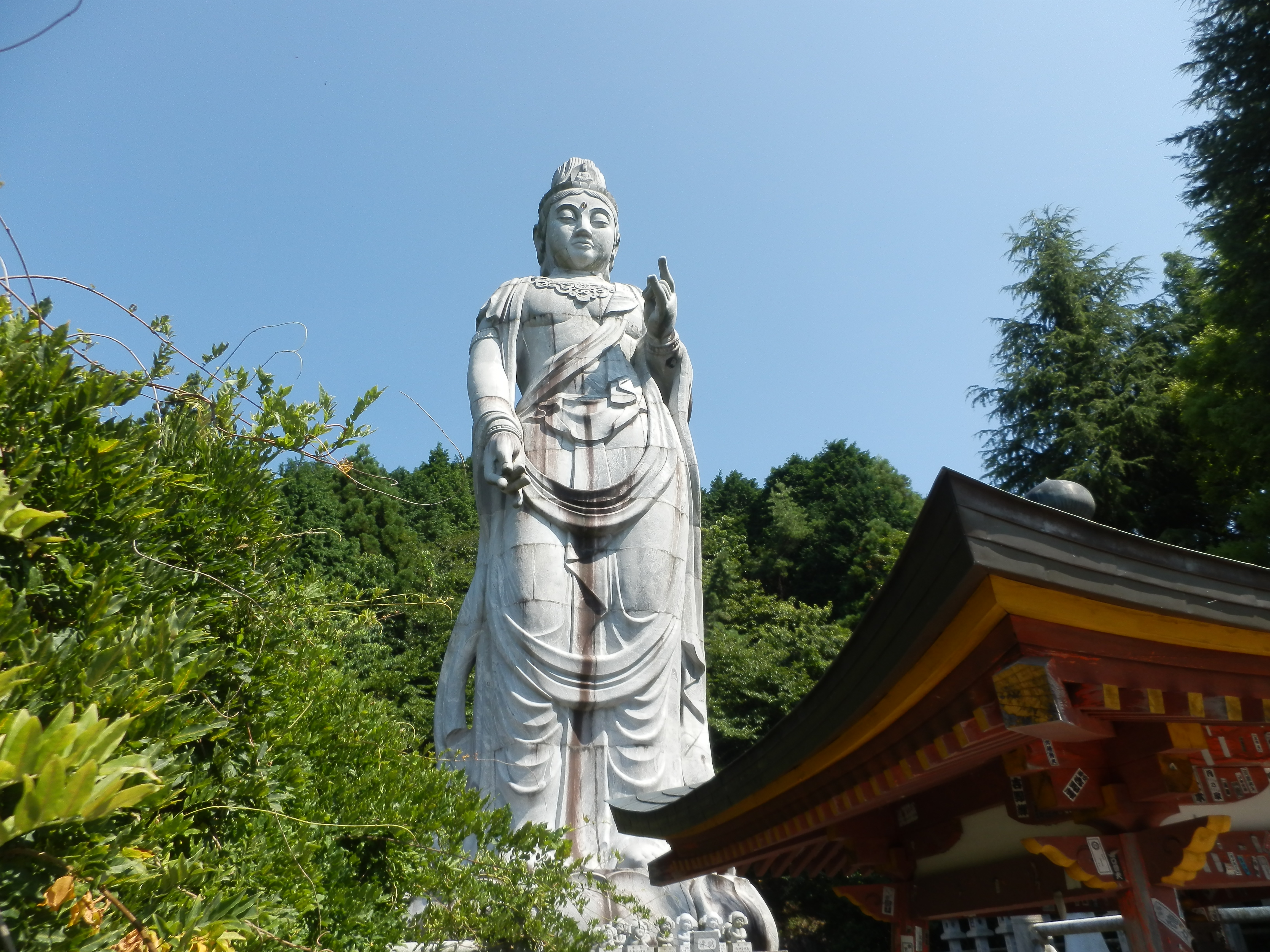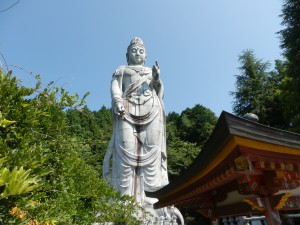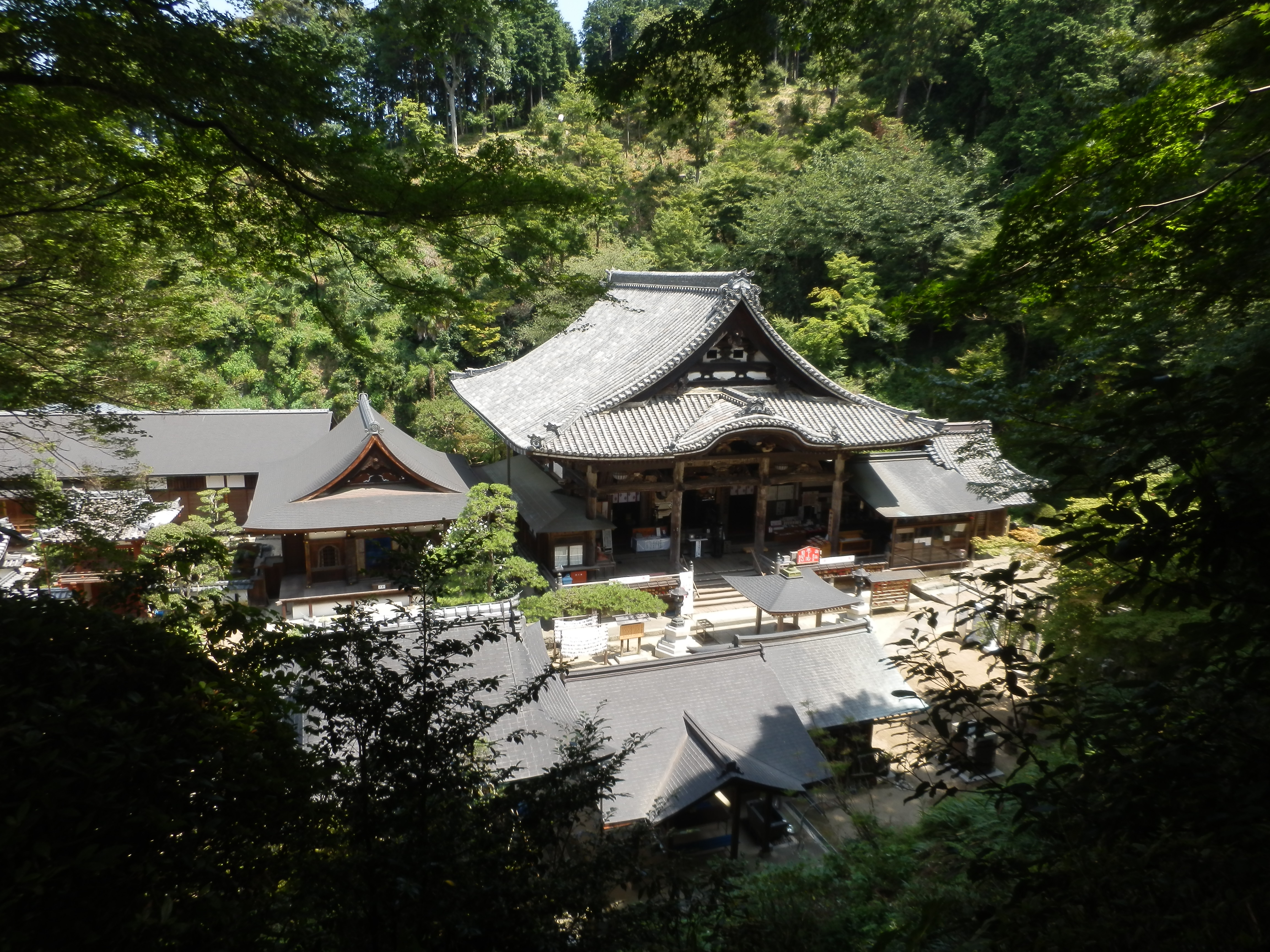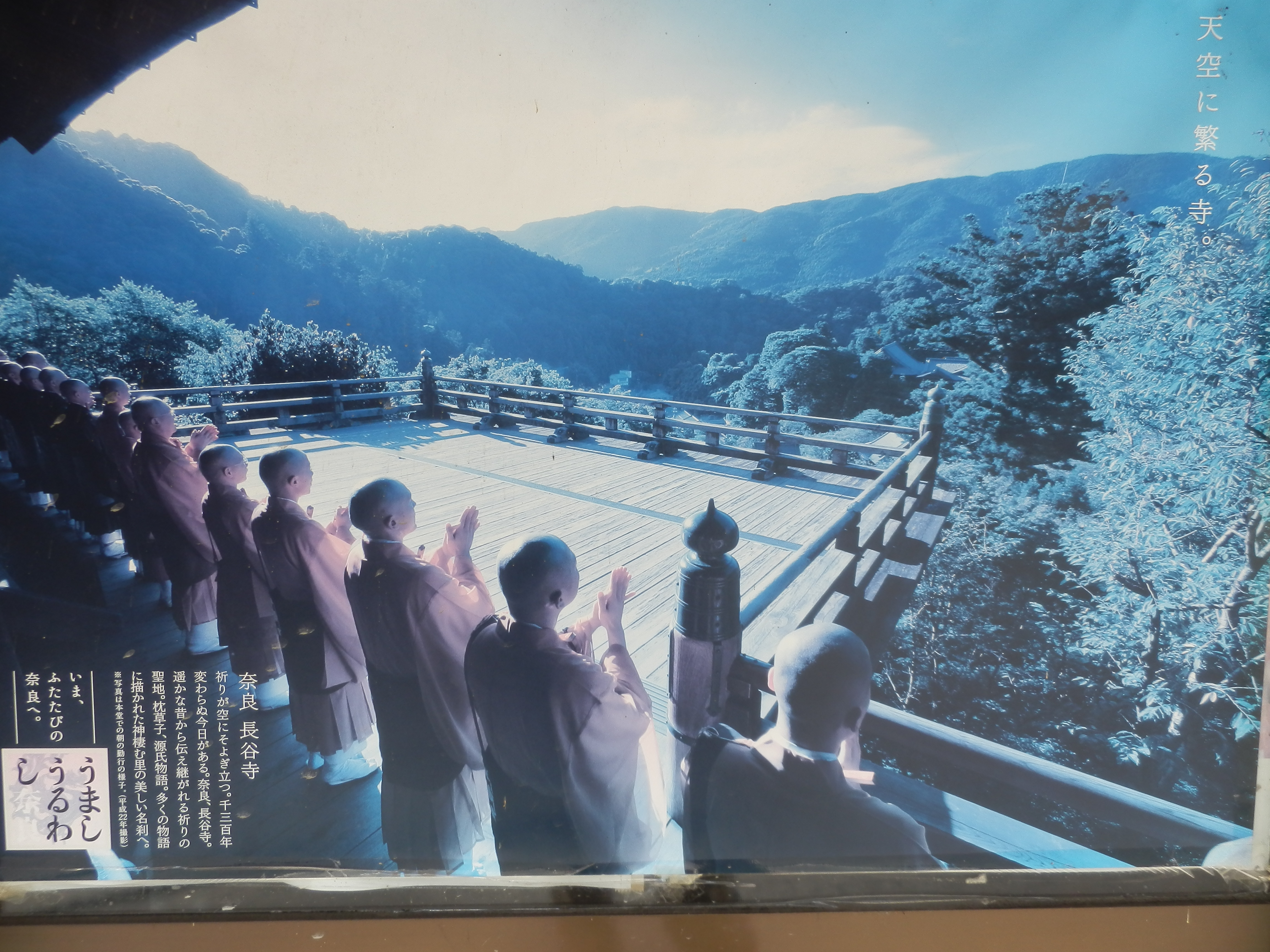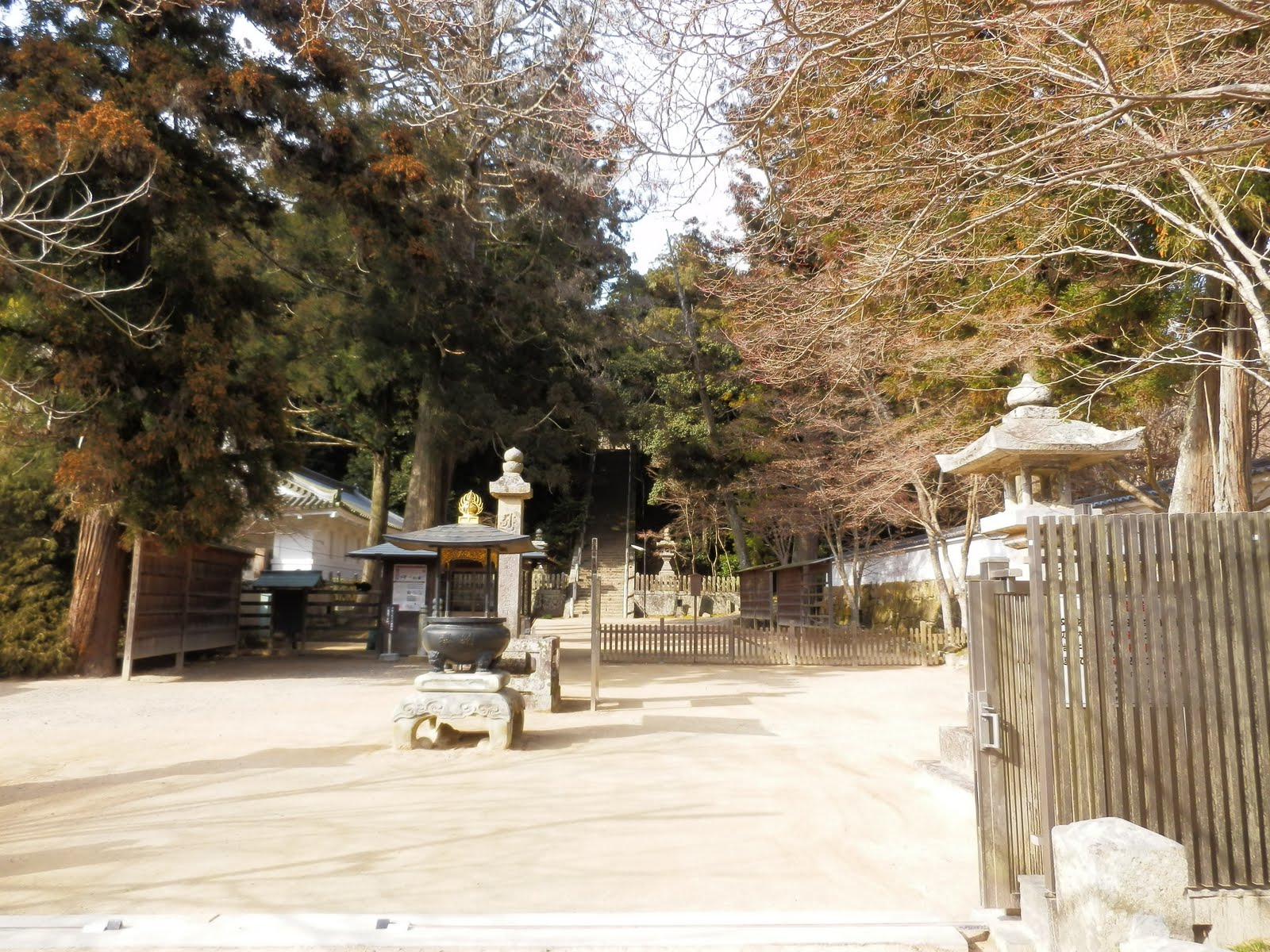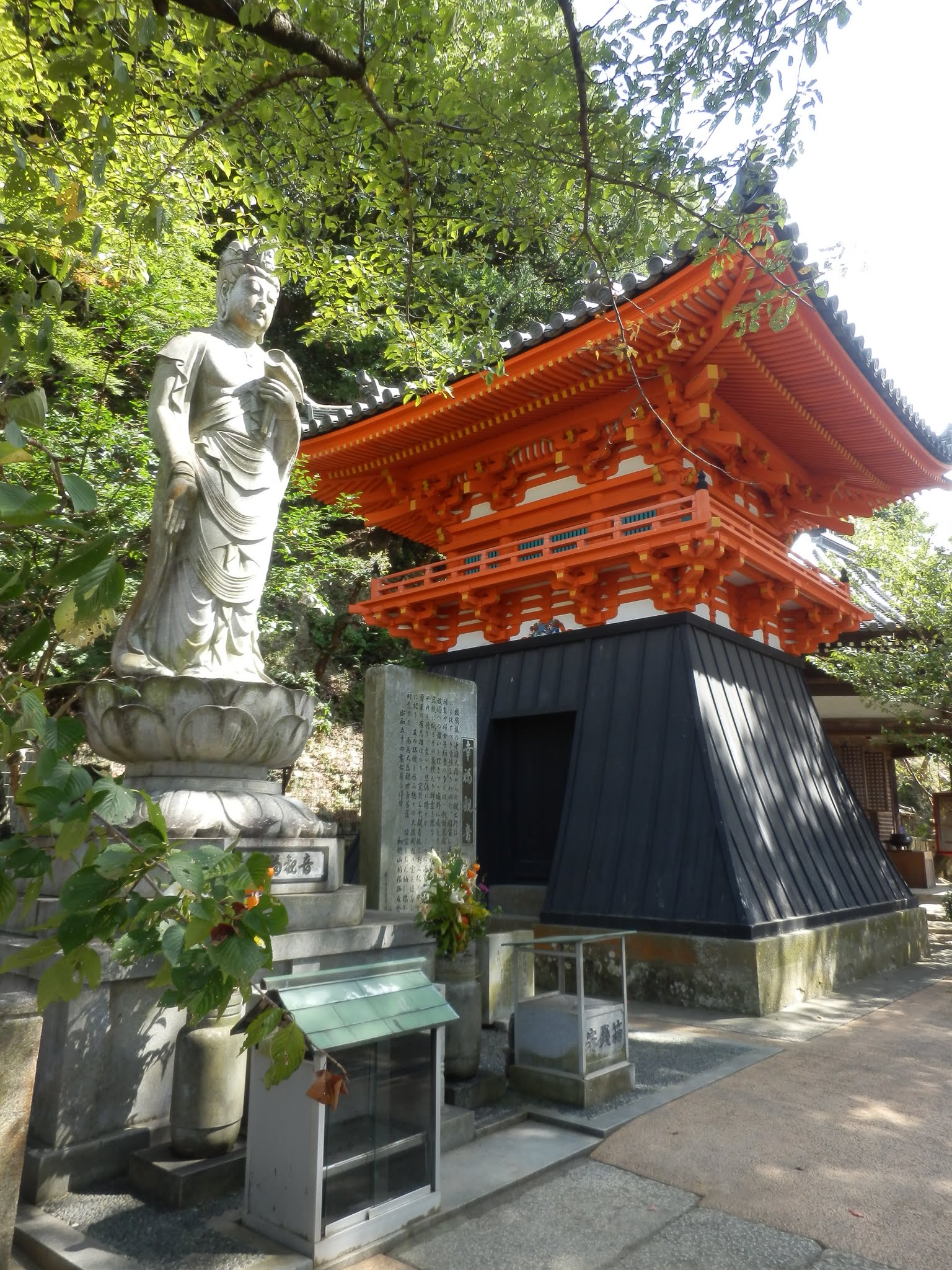Announcing a New Feature! Saigoku Kannon Pilgrimage
When I first moved to Japan, I had to google the difference between “shrines†and “temples.†If anyone had told me I would end up on a pilgrimage dedicated to Kannon, the bodhisattva of compassion, I would have said, what[the hell]’s a bodhisattva? Actually, they’re called bosatsu in Japanese, and they are traditionally those who have reached enlightenment but defer heading off to Nirvana until all of the rest of us can be saved too.
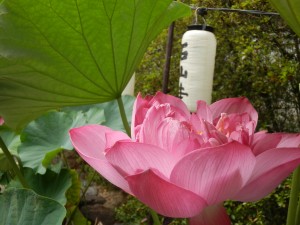 Kannon (also known as Kuan Yin or Avalokiteshvara or Chenrezig), 観音in Japanese, is one who sees and hears all; one who observes the cries of suffering, thus the western name ‘Goddess of Compassion’. This goddess is often a portrayal of the divine feminine in Japan today, but Kannon can also be masculine or genderless (especially in older and Indian contexts) depending on the place and situation of origin. Kannon is said to manifest in 33 forms, hence the 33 Temple Pilgrimage.
Kannon (also known as Kuan Yin or Avalokiteshvara or Chenrezig), 観音in Japanese, is one who sees and hears all; one who observes the cries of suffering, thus the western name ‘Goddess of Compassion’. This goddess is often a portrayal of the divine feminine in Japan today, but Kannon can also be masculine or genderless (especially in older and Indian contexts) depending on the place and situation of origin. Kannon is said to manifest in 33 forms, hence the 33 Temple Pilgrimage.
The pilgrimage route in its present form was set down by Emperor Kazan about a thousand years ago, but many of the temples along the route were (and are) pilgrimage sites in their own right, based on a particular miracle associated with that temple or aspect of its Kannon image. Many of them are also included in other pilgrimage routes as well.
One of my fellow JETs, upon hearing about my latest temple excursion, was heard to say “I wish I’d known about this thing sooner.†So I’d like to share this information just in case someone out there wants to use a few weekends, off days, and other free time to explore this aspect of Japanese culture that a good many Japanese folk have insisted they know next to nothing about (and then proceeded to help me find bus information I would have been horribly stranded without). I’ve managed to visit 23 out of 33 temples, and I’ll be introducing some of those to you in subsequent articles.
Initially, I had hoped to do the pilgrimage in order from start to finish, but this decision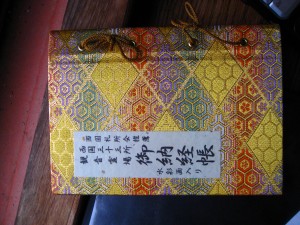 and my attempt to visit number one, Seiganto-ji in the Nachi-Katsuura area, coincided with last fall’s typhoon wrecking that area, so all travels to that coast of Wakayama were put off (unless they were to be volunteer trips, which I think they may still be accepting). Instead, I’ll use a geographical order. I’ll be introducing first those temples that are in Hyogo Prefecture, and then move on to some more that are farther afield.
and my attempt to visit number one, Seiganto-ji in the Nachi-Katsuura area, coincided with last fall’s typhoon wrecking that area, so all travels to that coast of Wakayama were put off (unless they were to be volunteer trips, which I think they may still be accepting). Instead, I’ll use a geographical order. I’ll be introducing first those temples that are in Hyogo Prefecture, and then move on to some more that are farther afield.
The temples range greatly in scale and size, in popularity and in ease of access. Some of the temples are tiny, pressed in to city centers, and others are sprawling mountainside complexes which provide hours of exploration. Kyoto’s incredibly famous Kiyomizu-dera is one of the 33, but so are some little temples in older capitals with buses passing nearby only once every three or four hours. There’s even a little temple in the hills south of Lake Biwa which only has publically available transportation once a month.
Not surprisingly, the journeys were often more instructive than the destinations: having these far flung temples as targets often brought me to corners of Japan I would likely have never even thought about seeing otherwise.
If you’re interested in the pilgrimage experience, what you should know is there’s no problem with being Buddhist or not, and that most of today’s pilgrims are a sort of combination prayer-offerer tourist. You don’t have to do them in order, and you don’t have to wear the white pilgrim outfit, but of course you are free to do so.
And if you don’t know the difference between a shrine and a temple, visit enough of them and you’ll see it for yourself. A few etiquette tips, though: it’s polite to put your hands flat together about chin-level (gassho-rei) and bow when you come through the gate, shortly after which you might like to ring the temple bell, if it’s allowed. When you make your prayer in the main hall, be careful of the shoes thing (some places let you wear them, others don’t, and still others don’t let you inside the main hall), and note that you aren’t supposed to clap after ringing the gong—that’s a shrine thing (but you’ll see some people doing it anyway). Usually the folks working in the temples are very kind and helpful, so feel free to ask them anything (though any attempt at Japanese is apt to get your farther than speaking to them only in English).
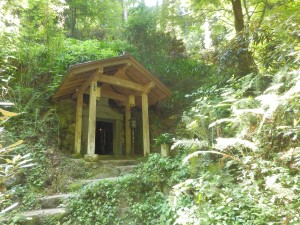 At most of the temples along the route, you are able to purchase the pilgrim book or nokyocho. These come with several different covers and versions with or without pictures. Inside you can collect the stamp and seal from each temple. The almost accidental purchase of one of these is what set me off on my quest in the first place!
At most of the temples along the route, you are able to purchase the pilgrim book or nokyocho. These come with several different covers and versions with or without pictures. Inside you can collect the stamp and seal from each temple. The almost accidental purchase of one of these is what set me off on my quest in the first place!
A map of the Kannon temples I compiled because I really wanted it to be a google map that my phone could access: https://maps.google.com/maps/ms?msid=211781966201391799171.0004a622468a784875fec&msa=0 (it’s based on this map: http://www.matsumasa.com/maps/e_saigoku33/)
A chart of the temples, their locations, and the type of Kannon image found there: http://en.wikipedia.org/wiki/Kansai_Kannon_Pilgrimage
List of Kannon forms:Â http://www.onmarkproductions.com/html/kannon.shtml
A website I found very helpful up through September is www.sacredjapan.com, though it seems to be experiencing some issues at the moment.
